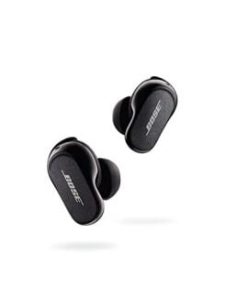The idea of mesh networking has been around for several years. However, we didn’t start seeing the term pop up on wifi routers and devices unti
Despite being around for several years now, the idea of mesh networking is still a bit foreign to many people. As such, any talk of adding mesh networking to your home can bring about confusion and even some anxiety about whether you’re making the right choice when it comes to buying a new router. Thankfully, mesh networking isn’t nearly as complicated as it sounds.
What is mesh networking?
Mesh networking, as opposed to traditional wifi setups, uses multiple devices rather than just one router. While only one device is actually connected to the modem, all devices in the mesh can put out a full strength signal, and, crucially, piggyback off one another to stitch together one large wifi network. In short, it extends your coverage within your home while maintaining strength and speed.
Mesh has a big advantage over typical setups, even those with range extenders. Your home internet router, for example, has a set range that its signal can reach. While other devices like wifi range extenders and repeaters can extend this signal, they come at a cost, usually halving the bandwidth of any network they’re feeding off of. A mesh network expands that signal as well, but because of the way its designed, it doesn’t pull from the speed at all, allowing the full signal to reach wherever you need it to without any kind of bandwidth compromise.
What is a mesh networking kit?
A mesh networking kit typically includes a main router (which connects to your modem) as well as one or several satellites, which act as nodes that expand the wifi signal. Each node connects to the node that came before it, expanding your signal further with each satellite. Depending on the brand that you buy, these kits can offer an expandable range of up to 5,000 square feet.
One easy way to think of these kits, and the devices they offer, is to imagine that they are all separate blankets that have been sewn together to create a larger blanket that covers your entire home. Together they deliver a stronger and more cohesive experience that will improve your home wifi.
Do I need a mesh network?
While many of us have dead zones for our home wifi, not everyone will benefit from a mesh network. Mesh networking works best for those who have large homes, or homes with multiple floors and thick walls. That’s because these thick walls and floors make it more difficult for the wifi signal to travel through, so a traditional router may have trouble getting a strong signal to these areas of your home.
With a mesh network, though, your satellites or nodes can pick up the slack, broadcasting a full strength signal to areas that would otherwise receive a diminished signal, or no signal at all. You’ll experience the same speeds as the original signal throughout your entire home. And, because mesh wifi all runs on the same SSID (wifi network name) and password, you don’t need to switch between networks as you connect to different nodes.
If you only have a couple of dead zones, like say, near your TV, then buying one of the best Wi-Fi extenders can often be cheaper, and it will solve the problem well enough. You’ll lose out on some of the speed that your original network offers, but you won’t end up overpaying to fix a problem that can be fixed for much cheaper.
What mesh networking system should I buy?
If you think that a mesh network is something you need, then you have plenty of options to choose from. Those looking for a budget-friendly option will find that the Vilo Mesh Wi-Fi System offers solid square footage and speeds at an affordable price of just $115.99 for a three-device package.
If you want something that’s easy to expand, then the Eero 6+ is a solid option, and it starts at just $139.99, though that is for each device. You can purchase multi-packs off Amazon, which can save you some money if you need multiple devices in your mesh network. Each device covers up to 1,500 square foot, though, so that should be more than enough for most folks.
Finally, those looking for a good gaming setup for mesh networking will find the ASUS ROG Rapture GT6 2-Pack is a solid choice. It runs $479.99 at list price, but it can often be found for much cheaper, and it’s designed with a ton of gamer-centric features that may make the price a bit more justifiable for many.
Check out the mesh networks recommended in this piece:
- Vilo Mesh Wi-Fi System: $115.99 (three-pack)
- Eero 6+: $139.99 (each)
- ASUS ROG Rapture GT6 2-Pack: $479.99




